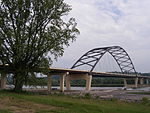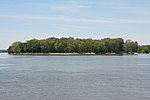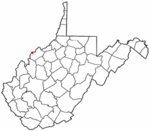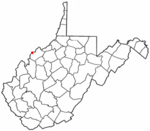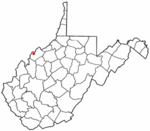Belpre Township, Ohio
Townships in OhioTownships in Washington County, OhioUse mdy dates from July 2023

Belpre Township is one of the twenty-two townships of Washington County, Ohio, United States. The 2020 census found 3,897 people in the township.
Excerpt from the Wikipedia article Belpre Township, Ohio (License: CC BY-SA 3.0, Authors, Images).Belpre Township, Ohio
Washington Boulevard,
Geographical coordinates (GPS) Address Nearby Places Show on map
Geographical coordinates (GPS)
| Latitude | Longitude |
|---|---|
| N 39.281666666667 ° | E -81.662222222222 ° |
Address
Washington Boulevard
Washington Boulevard
45714
Ohio, United States
Open on Google Maps
